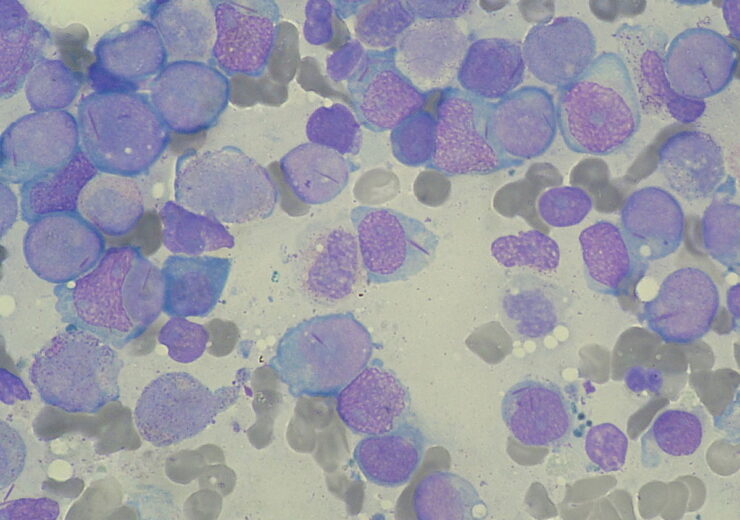VANFLYTA is not indicated as maintenance monotherapy following allogeneic hematopoietic stem cell transplantation (HSCT); improvement in overall survival with VANFLYTA in this setting has not been demonstrated

Myeloblasts with Auer rods seen in Acute Myeloid Leukemia (AML). (Credit: Paulo Henrique Orlandi Mourao from Wikimedia Commons)
Daiichi Sankyo today announced that VANFLYTA (quizartinib) is now available by prescription in the U.S. VANFLYTA is the first and only FLT3 inhibitor to be approved by the US Food and Drug Administration (FDA) specifically for FLT3-ITD positive acute myeloid leukaemia (AML) and across the three phases of treatment – induction, consolidation and maintenance in patients without transplant – for newly diagnosed AML.
VANFLYTA was approved by the FDA on July 20, 2023 in combination with standard cytarabine and anthracycline induction and cytarabine consolidation, and as maintenance monotherapy following consolidation chemotherapy, for the treatment of adult patients with newly diagnosed AML that is FLT3-ITD positive as detected by an FDA-approved test. VANFLYTA is not indicated as maintenance monotherapy following allogeneic hematopoietic stem cell transplantation (HSCT); improvement in overall survival with VANFLYTA in this setting has not been demonstrated.
“With VANFLYTA now available by prescription in the U.S., physicians and patients have a new treatment option for the aggressive FLT3-ITD subtype of acute myeloid leukemia,” said Dan Switzer, Head of U.S. Oncology Business, Daiichi Sankyo, Inc. “VANFLTYA is the first FLT3 inhibitor to be developed and approved specifically for FLT3-ITD positive AML and has demonstrated potential to change the way the disease is treated.”
In the QuANTUM-First trial, VANFLYTA combined with standard cytarabine and anthracycline induction and standard cytarabine consolidation, and continued as maintenance monotherapy following consolidation, resulted in a 22% reduction in the risk of death compared to standard chemotherapy alone (HR = 0.78 [95% CI: 0.62-0.98; 2-sided p=.0324]) in patients with newly diagnosed FLT3-ITD positive AML. While complete remission (CR) rates were similar between both arms of the trial, the median duration of CR was more than three times longer at 38.6 months (95% CI: 21.9, NE) for patients receiving VANFLYTA compared to 12.4 months for those receiving placebo plus standard chemotherapy alone (95% CI: 8.8-22.7). The results of QuANTUM-First were published in The Lancet.1
The safety of VANFLYTA was evaluated in 265 patients with newly diagnosed FLT3-ITD positive AML who received VANFLYTA once daily (35.4 mg with chemotherapy, 26.5 to 53 mg as maintenance) in the QuANTUM-First trial. VANFLYTA is approved with a Boxed WARNING for QT prolongation, torsades de pointes and cardiac arrest. Treatment emergent QT interval prolongation events of any grade were reported in 14% of patients who received VANFLYTA, including 3.0% who experienced a grade 3 or 4 event. Of the 265 patients treated with VANFLYTA and standard chemotherapy, QTcF >500 ms occurred in 2.3% of patients based on central ECG review and 10% of patients had an increase from baseline QTcF greater than 60 ms.
Source: Company Press Release
